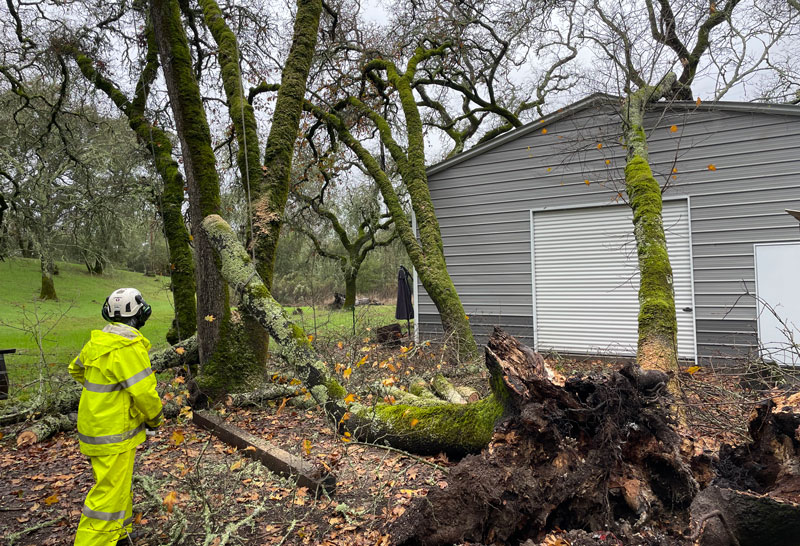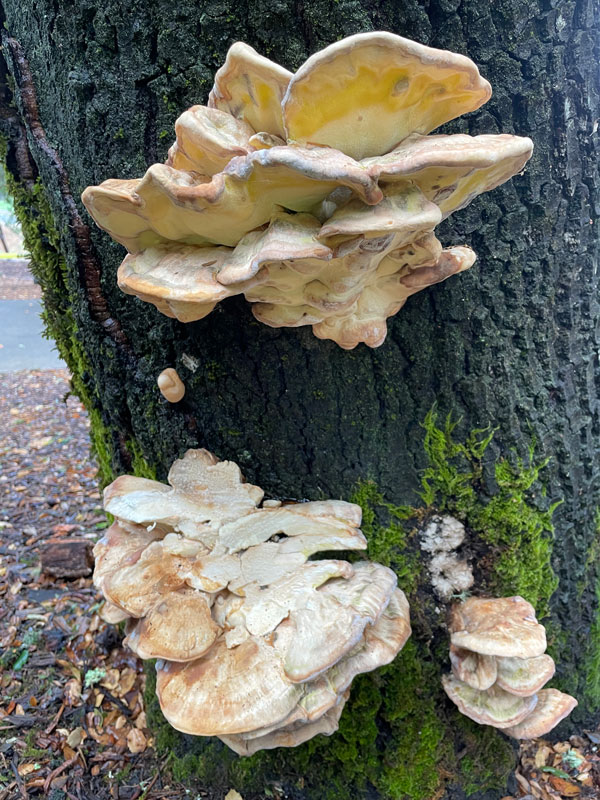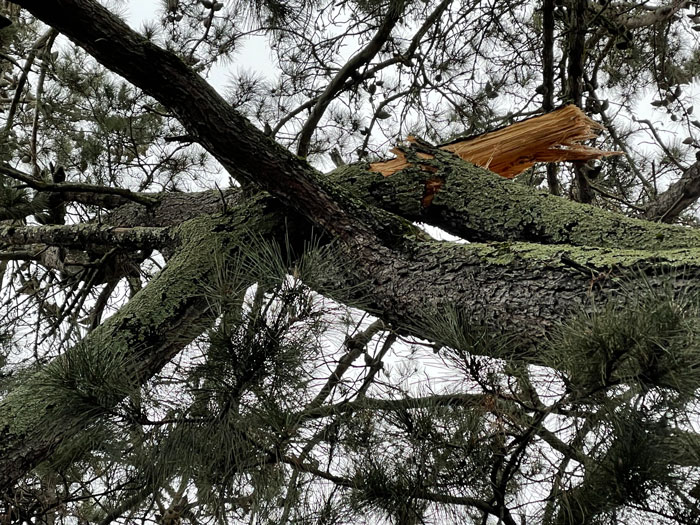
A neighbor reported that the wind had been howling in the night and he heard a rumble when the tree section fell. This was one of three emergency jobs we were called over the stormy weekend.
This tree failure occurred where two trunks were joined. Co-dominant trunks or leaders that have a high “V” shaped attachments have a condition known as”included bark.” When the bark is included the tree is unable to grow tissue between the trunks. This can lead to splits at the crotch where the limbs or trunks meet. Branches with horizontal attachments have better attachments and are less likely to fail. However, when horizontal limbs become greater than half the diameter of the tree’s trunk they are also subject to greater stress and have a higher risk of failure.
When branches are wet from the rain they become heavier and this added weight combined with wind create the potential for limb failures.
If your trees have heavy branches and you are worried about them falling on your house during a storm, call 1 (888) TREE-PRO for a free consultation.
When trees fall over at the base and the roots are pulled up there are several factors that contribute to this type of failure. A large tree with a heavy canopy has a lot of “wind sail” which catches the wind much like the sail on sail boat. The roots of the tree may be compromised by root fungi that cause die back of the large roots that provide support for the tree. Some common root fungi that affect our native trees include phytophthera and armallaria mallea. These are the most common fungi that affect native oaks.
When soils become saturated in combination with strong winds, trees are more likely to fail at the root crown.

Another common fungi in our area is Ganoderma Appalatum which is a growth that occurs at the lower trunks of tree with decay. This fungi is flat shaped growth with a brown top and a white bottom that grows out of the tree trunk.
It is a good idea to have your mature trees inspected on a yearly basis by a Certified Arborist to identify potential hazards and provide recommendations to mitigate those hazards. The mitigation may include reducing weight on heavy limbs or limbs with weak attachments. In some cases it is advisable to install cables or braces to add support to tree limbs or trunks.
Trees add value and beauty to your home. Inspections and regular maintenance will help to promote tree health and reduce hazards.
If you have an emergency, call 911, and if nobody is hurt call 1 (888) TREE-PRO to get the crew at your house and take advantage of our 24/7 emergency services.
Ron Wallace, Certified Arborist #WE 0979A






